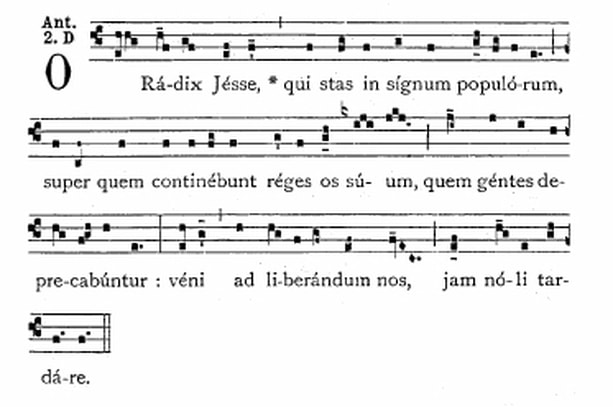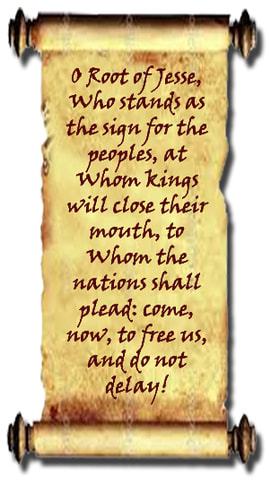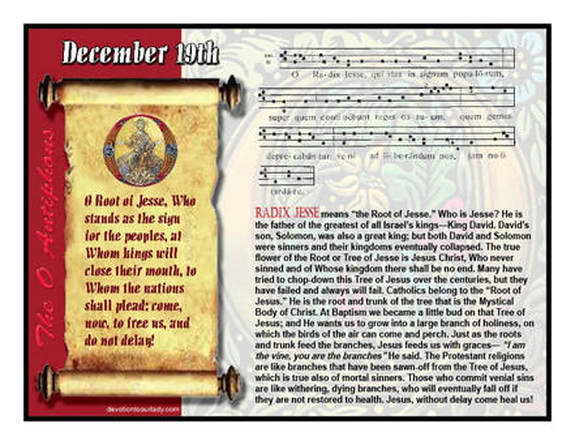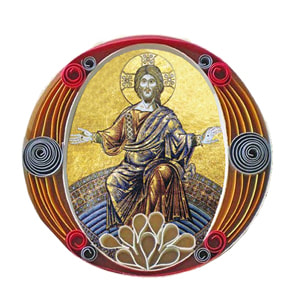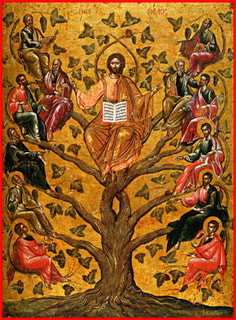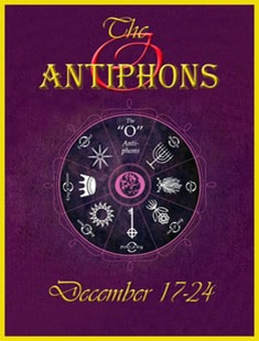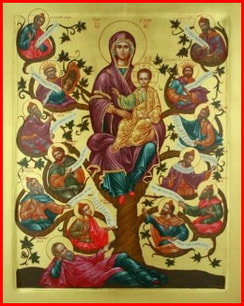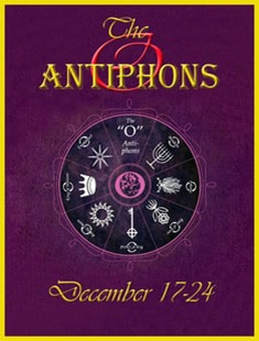| Devotion to Our Lady |
|
- Homepage
-
Daily Thoughts
- 2023 October Daily Thoughts
- Daily Thoughts Lent 2020
- Daily Thoughts for Advent 2019
- Daily Thoughts for October 2019
- Daily Thoughts for September 2019
- Daily Thoughts for August 2019
- Daily Thoughts for July
- Daily Thoughts for June
- Daily Thoughts for Easter 2019
- Daily Thoughts for Lent 2019
- Daily Thoughts for Christmas
- Daily Thoughts Easter 2022
- Sacred Heart
- Holy Ghost
-
Spiritual Life
- Holy Mass Explained
- First Friday Devotions
- First Saturday Devotions
- The Mercy of God
- Vocations
- The Path Everyone Must Walk >
- Gift of Failure
- Halloween or Hell-O-Ween?
- Ignatian Spiritual Exercises >
- Meditation is Soul-Saving
- Spiritual Communion
- Miraculous Medal
- Enrollment in Miraculous Medal
- St. Benedict Medal
- Holy Water
- Advice on Prayer
- Your Daily Mary
-
Prayers
- September Devotions
- Seven Sorrows of Our Lady
-
Novenas
>
- NV-Help of Christians
- NV-Nativity of Our Lady
- NV-Seven Sorrows
- NV- Sorrowful Heart
- NV-Pope St Pius X
- NV-La Salette
- NV-St Michael Archangel
- NV-Immaculate Heart
- NV-Assumption
- NV-Novena for Fathers
- NV-Novena for Your Mother
- NV-St Raphael Archangel
- NV-Souls in Purgatory
- NV-All Saints Day
- NV-Christ the King
- NV-Divine Motherhood
- NV-Guardian Angels
- NV-Rosary
- NV-Mirac Med
- NV- Imm Conc
- NV - Guadalupe
- NV - Nativity of Jesus
- NV-Epiphany
- NV-OL Good Success
- NV-Lourdes
- NV-St Patrick
- NV-St Joseph
- NV-Annunciation
- NV-St Louis de Montfort
- NV-OL Good Counsel
- NV-Last Supper
- NV-Passion
- NV-Pentecost
- NV-Ascension
- NV-Sacred Heart
- NV-Sacred Heart & Perpetual Help
- NV-Corpus Christi
- NV-OL of Perpetual Help
- NV-Queenship BVM
- NV-OL of Mount Carmel
- NV-St Mary Magdalen
- NV- Im Hrt
- August Devotions to IHM
- Immaculate Heart of Mary
- Litany of Dependence
- Prayers to St Mary Magdalen
- Prayers in Times of Sickness Disease & Danger
- Holy Souls in Purgatory
- Meditations on the Litany of Our Lady
- Special Feast Days
- Prayers to Mary (Mon-Sun)
- Litanies to Our Lady >
- Various & Special Needs
- Our Lady of the Rosary
- Our Lady of Mt. Carmel
- Our Lady of Perpetual Help
- Our Lady of Guadalupe
- Other titles of Our Lady
-
Rosary
- Downloads
- Consecration
- Easter Season
-
Holy Week
- Last Seven Words of Jesus >
- Characters of Passion >
- The Last Days of Christ
- Before Palm Sunday
- Palm Sunday
- Monday in Holy Week
- Tuesday in Holy Week
- Wednesday in Holy Week
- Holy Thursday (Last Supper)
- Holy Thursday (Agony & Arrest)
- Night Vigil with Christ
- Good Friday (Pilate & Herod)
- Good Friday (Way of Cross & Crucifixion)
- Saturday in Holy Week
-
Lent
- Ideas for Lent
- Daily Lenten Planner
- Daily Lenten Liturgy
- From Cold to Hot
- Lent with Aquinas
- Lent with Dom Gueranger
- Virtues for Lent
- History of Penance
- How Expensive is Sin?
- Confession of Sins
- Letter to Friends of the Cross
- Sermons for Lent
- Stations of the Cross >
- Lenten Prayers
- 7 Penitential Psalms
- Lenten Psalms SUN
- Lenten Psalms MON
- Lenten Psalms TUE
- Lenten Psalms WED
- Lenten Psalms THU
- Lenten Psalms FRI
- Lenten Psalms SAT
- Lenten Laughs
- Septuagesima
-
Christmas
- Epiphany Explained
- Suggestions for Christmas
- Food For Thought
- Christmas with Aquinas
- Christmas with Dom Gueranger
- Christmas Prayers
- Candles & Candlemas
- Christmas Sermons
- Christmas Prayers SUN
- Christmas Prayers MON
- Christmas Prayers TUE
- Christmas Prayers WED
- Christmas Prayers THU
- Christmas Prayers FRI
- Christmas Prayers SAT
- Twelve Days of Christmas >
-
Advent Journey
- Purgatory
- Christ the King
- Legion of Mary
- Scapular
-
Saints
-
Martyrs for the Faith
>
- Your Daily Martyr >
- All 365 Days of Martyrs
- Cristeros
- St Valentine & Valentine's Day
- Martyrs--Thomas Becket
- Martyrs--John the Apostle
- Holy Machabees
- Age of Martyrdom
- Carmelites of Compiegne
- Martyrs--Peter & Paul
- Martyrs--John the Baptist
- Martyrs--Andrew
- Martyrs--James the Great
- Martyrs--North American
- Martyrs--Seven Holy Sleepers
- Martyrs--Afra
- School of Martyrdom
- Martyrs--Christina
- Desert Saints >
- Saints for Sinners >
- Saints of Mary >
- History of All Saints Day
-
Martyrs for the Faith
>
- Precious Blood
- Synod 2023
-
Catechism
- Catechism Lesson 1
- Catechism Lesson 2
- Catechism Lesson 3
- Catechism Lesson 4
- Catechism Lesson 5
- Catechism Lesson 6
- Catechism Lesson 7
- Catechism Lesson 8
- Catechism Lesson 9
- Catechism Lesson 10
- Catechism Lesson 11
- Catechism Lesson 12
- Catechism Lesson 13
- Catechism Lesson 14
- Catechism Lesson 15
- Catechism Lesson 16
- Catechism Lesson 17
- Catechism Lesson 18
- Catechism Lesson 19
- Catechism Lesson 20
- Catechism Lesson 21
- Catechism Lesson 22
- Bible Study
-
Calendar
- Miracles
- Apparitions
- Shrines
- Prophecies
- Angels Homepage
- Hell
-
Church Crisis
- Conspiracy Theories
- Amazon Synod 2019 >
- Liberalism & Modernism
- Modernism--Encyclical Pascendi
- Modernism & Children
- Modernism--Documents
- The Francis Pages
- Church Enemies on Francis
- Francis Quotes
- Amoris Laetitia Critique
- Danger of Ignorance (Pius X)
- Restore all In Christ (Pius X)
- Catholic Action (Pius X)
- Another TITANIC Disaster?
- The "Errors of Russia"
- CRISIS PRAYERS
- Election Novena 2024
- The Anger Room
- War Zone
- Life of Mary
- Spiritual Gym
- Stupidity
- Coronavirus and Catholicism
- History & Facts
- Books
- Catholic Family
- Children
- Daily Quiz
-
Novena Church & Pope
- Day 01 Church-Pope Novena
- Day 02 Church-Pope Novena
- Day 03 Church-Pope Novena
- Day 04 Church-Pope Novena
- Day 05 Church-Pope Novena
- Day 06 Church-Pope Novena
- Day 07 Church-Pope Novena
- Day 08 Church-Pope Novena
- Day 09 Church-Pope Novena
- Day 10 Church-Pope Novena
- Day 11 Church-Pope Novena
- Day 12 Church-Pope Novena
- Day 13 Church-Pope Novena
- Day 14 Church-Pope Novena
- Day 15 Church-Pope Novena
- Day 16 Church-Pope Novena
- Day 17 Church-Pope Novena
- Day 18 Church-Pope Novena
- Day 19 Church-Pope Novena
- Day 20 Church-Pope Novena
- Day 21 Church-Pope Novena
- Day 22 Church-Pope Novena
- Day 23 Church-Pope Novena
- Day 24 Church-Pope Novena
- Day 25 Church-Pope Novena
- Day 26 Church-Pope Novena
- Day 27 Church-Pope Novena
- Day 28 Church-Pope Novena
- Day 29 Church-Pope Novena
- Day 30 Church-Pope Novena
- Day 31 Church-Pope Novena
- Day 32 Church-Pope Novena
- Day 33 Church-Pope Novena
- Day 34 Church-Pope Novena
- Day 35 Church-Pope Novena
- Day 36 Church-Pope Novena
- Day 37 Church-Pope Novena
- Day 38 Church-Pope Novena
- Day 39 Church-Pope Novena
- Day 40 Church-Pope Novena
- Day 41 Church-Pope Novena
- Day 42 Church-Pope Novena
- Day 43 Church-Pope Novena
- Day 44 Church-Pope Novena
- Day 45 Church-Pope Novena
- Day 46 Church-Pope Novena
- Day 47 Church-Pope Novena
- Day 48 Church-Pope Novena
- Day 49 Church-Pope Novena
- Day 50 Church-Pope Novena
- Day 51 Church-Pope Novena
- Day 52 Church-Pope Novena
- Day 53 Church-Pope Novena
- Day 54 Church-Pope Novena
- Penance Novena
- Daily WeAtheR Forecast
CLICK ON THE LINK YOU WISH TO VIEW
| THE STORY BEHIND THE 'O' ANTIPHONS |
| O SAPIENTIA (for December 17) | O ADONAI (for December 18) | O RADIX JESSE (for December 19) | O CLAVIS DAVID (for December 20) |
| O ORIENS (for December 21) | O REX GENTIUM (for December 22) | O EMMANUEL (for December 23) |
| THE STORY BEHIND THE 'O' ANTIPHONS |
| O SAPIENTIA (for December 17) | O ADONAI (for December 18) | O RADIX JESSE (for December 19) | O CLAVIS DAVID (for December 20) |
| O ORIENS (for December 21) | O REX GENTIUM (for December 22) | O EMMANUEL (for December 23) |
Antiphon No. 3 for December 19th
TEXT OF THE ANTIPHON AND THE MAGNIFICAT IN LATIN AND ENGLISH
First pray the Antiphon; then the Magnificat ; then repeat the Antiphon
First pray the Antiphon; then the Magnificat ; then repeat the Antiphon
|
LATIN VERSION
ANTIPHON: O Radix Jesse, qui stas in signum populorum, super quem continebunt reges os suum, quem gentes deprecabuntur; veni ad liberandum nos, iam noli tardere.
THE MAGNIFICAT: Magníficat ánima mea Dóminum. Et exultávit spíritus meus: in Deo salutári meo. Quia respéxit humilitátem ancíllae suae: Ecce enim ex hoc beátam me dicent omnes generatiónes. Quia fécit mihi mágna qui pótens est: et sánctum nómen eius. Et misericórdia eius in progénies et progénies timéntibus eum. Fécit poténtiam in bráchio suo: dispérsit supérbos mente cordis sui. Depósuit poténtes de sede: et exaltávit húmiles. Esuriéntes implévit bonis: et dívites dimísit inánes. Suscépit Ísrael púerum suum: recordátus misericórdiae suae. Sicut locútus est ad patres nostros: Ábraham, et sémini eius in saecula. Glória Patri, et Fílio, et Spirítui Sancto, Sicut erat in princípio, et nunc, et semper, et in sæcula sæculórum. Amen. ANTIPHON: O Radix Jesse, qui stas in signum populorum, super quem continebunt reges os suum, quem gentes deprecabuntur; veni ad liberandum nos, iam noli tardere. V. Domine, exaudi orationem meam. R. Et clamor meus ad te veniat. OREMUS: Aurem tuam, quaesumus, Domine, precibus nostris accommoda: et mentis nostrae tenebras gratia tuae visitationis illustra. Qui vivis et regnas cum Deo Patre, in unitáte Spíritus Sancti, Deus, per ómnia sǽcula sæculórum. R. Amen. |
ENGLISH VERSION
ANTIPHON: O Root of Jesse, Who stands as a sign for the peoples, at Whom kings will close their mouths; to whom the nations shall plead: come now to free us.
THE MAGNIFICAT: My soul doth magnify the Lord. And my spirit hath rejoiced in God my Savior. Because He hath regarded the humility of His handmaid: For behold from henceforth all generations shall call me blessed. Because He that is mighty hath done great things to me; and holy is His name. And His mercy is from generation unto generations, to them that fear Him. He hath shown might in His arm: He hath scattered the proud in the conceit of their heart. He hath put down the mighty from their seat, and hath exalted the humble. He hath filled the hungry with good things; and the rich He hath sent empty away. He hath received Israel His servant, being mindful of His mercy: As He spoke to our fathers, to Abraham and to His seed for ever. Glory be the Father, and to the Son, and to the Holy Ghost, As it was in the beginning, is now, and ever shall be, forever and ever, Amen. ANTIPHON: O Root of Jesse, Who stands as a sign for the peoples, at Whom kings will close their mouths; to whom the nations shall plead: come now to free us. V. O Lord hear my prayer. R. And let my cry come unto Thee. LET US PRAY: O Lord, we beseech thee, mercifully incline Thine ears unto our prayers, and lighten the darkness of our minds by the grace of Thy heavenly visitation. Who livest and reignest with God the Father in the unity of the Holy Spirit, one God, world without end. R. Amen |
DOWNLOAD OUR 3rd “O” ANTIPHON POSTER ~ O RADIX JESSE
|
Click on the PDF file link below and download a Letter Size (8.5 x 11 inch) poster on today's O Antiphon: O Radix Jesse Each day's Antiphon will have its own poster. The Gregorian Chant notation is at the top of the page, followed by few brief meditative thoughts upon the relevance of the Antiphon for our days. A wonderful keepsake that you will use year after year. Our Christmas gift to you!
| |||||||
AN EXPLANATION AND A MEDITATION
|
O Jesus, O Son of Jesse! Thou art approaching the city of Thy ancestors. The Ark of the Lord has risen, and journeys, with the God that is in her, to the place of her rest. “How beautiful are thy steps, O thou daughter of the Prince,” now that thou art bringing to the cities of Juda their salvation! The angels escort thee, thy faithful Joseph lavishes his love upon thee, heaven delights in thee, and our earth thrills with joy to bear thus upon itself its Creator and its Queen. Go forward, O Mother of God and Mother of men! Speed thee, thou propitiatory that holdest within thee the divine Manna which gives us life! Our hearts are with thee, and count thy steps.
Like thy royal ancestor David, we will not enter into the dwelling of our house, nor go up into the bed whereon we lie, nor give sleep to our eyes, nor rest to our temples, until we have found a place in our hearts for the Lord, whom thou bearest, a tabernacle for this God of Jacob. Come, then, O Root of Jesse, thus hidden in this Ark of purity; Thou wilt soon appear before Thy people as the standard round which all that would conquer must rally. Then their enemies, the kings of the world, will be silenced, and the nations will offer Thee their prayers. Hasten Thy coming, dear Jesus! Come and conquer all our enemies, and deliver us. What urgency there is this antiphon. Something that lies below the earth (a root) stands high unto the heavens like a banner! Vexilia Regis Prodeunt (The Standard of the King appears) we sing in Lent... what is a little root during Advent becomes by Lent the Tree of our salvation. Isaias (11:10) gives us imagery for our reflection today. The great prophet of Advent tells us that the kingdom of David would be destroyed, but not entirely destroyed. A root would remain. Jesse is David's father. David is Jesse's root. David leads to Christ. After the destruction there remains a root. No matter what the exigencies of life present to us or how turbulent the vicissitudes of the passing world may be, when we cling to the root we are sure to be victorious in the end. Jesse was the father of King David. God promised David that his Kingdom would last forever - and that through him and his seed God would save his people and bless the world. Two centuries after the death of King David God spoke through the prophet Isaiah and said: “And there shall come forth a rod out of the root of Jesse, and a flower shall rise up out of his root. And the spirit of the Lord shall rest upon him: the spirit of wisdom, and of understanding, the spirit of counsel, and of fortitude, the spirit of knowledge, and of godliness. And he shall be filled with the spirit of the fear of the Lord. He shall not judge according to the sight of the eyes, nor reprove according to the hearing of the ears. But he shall judge the poor with justice, and shall reprove with equity for the meek of the earth: land he shall strike the earth with the rod of his mouth, and with the breath of his lips he shall slay the wicked” (Isaias 11:1-4). Isaias also speaks in many other places of the promised King in the line of David - the one whose coming we await during the Season of Advent and whose birth we celebrate at Christmas. And so do the other prophets. Indeed from the story of Adam and Eve to the call of Abraham to leave his home and country and go to a land God would show him, and from the promises made to Moses in the desert of Sinai to the building of the First Temple in Jerusalem by King Solomon, God has promised to be with and to dwell with His People and to bring a new world into being where the wolf will live the lamb and the leopard lie down with the goat - a world where the power of Satan will be crushed under the heel of the child of Eve - a world in which justice and righteousness will shine and evil will be no more, neither will there be suffering nor death. The Jesse Tree The Tree of Jesse is a depiction in art of the ancestors of Christ, shown in a tree which rises from Jesse of Bethlehem, the father of King David and is the original use of the family tree as a schematic representation of a genealogy. In the portrayal of the descent of Christ from the line of David, there may be as few as four or five figures or as many as fifty. The twisting branches of the tree always start with Jesse and end at the top with Christ. It originates in a passage in the biblical Book of Isaiah which describes metaphorically the descent of the Messiah. The various figures depicted in the lineage of Jesus are drawn from those names listed in the Gospel of St. Matthew and the Gospel of St. Luke. The Jesse Tree has been depicted in almost every medium of Christian art. Generally only a few of the most well known individuals, like Kings David and Solomon, are represented on Jesse Trees, rather than an attempt to display the entire lineage. The first representations of the passage in Isaiah, from about 1000 AD in the West, show a “shoot” in the form of a straight stem or a flowering branch held in the hand most often by the Virgin, or by Jesus when held by Mary, by the prophet Isaias or by an ancestor figure. The shoot as an attribute acted as a reminder of the prophecy. The most typical form which the Jesse Tree takes is to show the figure of Jesse, often larger than all the rest, reclining or sleeping (perhaps by analogy to Adam when his rib was taken) at the foot of the pictorial space. From his side or his navel springs the trunk of a tree or vine which ascends, branching to either side. On the branches, usually surrounded by formally scrolling tendrils of foliage, are figures representing the ancestors of Christ. The trunk generally ascends vertically to Mary and then Christ at the top. The number of figures depicted varies greatly, depending on the amount of room available for the design. As a maximum, if the longer ancestry from Luke is used, there are 43 generations between Jesse and Jesus. The identity of the figures also varies, and may not be specified, but Solomon and David are usually included, and often all shown wear crowns. Most Jesse Trees include Mary immediately beneath the figure of Jesus (or, in the Gothic period, show a Virgin and Child), emphasizing that she was the means by which the shoot of Jesse was born. St Leo the Great, in one of his sermons, says: “In which rod, no doubt the Blessed Virgin Mary is predicted, who sprung from the stock of Jesse and David and fecundated by the Holy Ghost, brought forth a new flower of human flesh, becoming a virgin-mother.” Saint Joseph is rarely shown, although unlike Mary he is a link in the Gospel genealogies. It was believed in the Middle Ages that the House of David could only marry within itself, and that she was independently descended from Jesse. Sometimes Jesus and other figures are shown in the cups of flowers, as the fruit or blossom of the Tree. The Jesse Tree was the only prophecy in the Old Testament to be so literally and frequently illustrated, and so came also to stand for the Prophets, and their foretelling of Christ, in general. Both the St. Denis and Chartres stained-glass windows of the Jesse Tree, include columns of prophets, as do many depictions. Often they carry scrolls with a quotation from their writings, and they may point to Christ, as the foretold Messiah. The inclusion of kings and prophets was also an assertion of the inclusion and relevance in the biblical canon of books that some groups had rejected in the past. |
Web Hosting by Just Host


